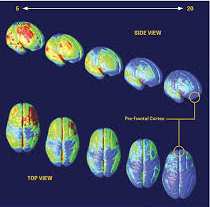The Effects of Cocaine Use on Memory Case Study Research Methods
Name:______________________________________
Research Methods
Letís analyze the following studies. This assignment is worth 100 points. Each question is worth 20 points.

1) Professor Plat wants to study the effects of cocaine use on memory. He contacts the local rehab clinic and recruits 10 cocaine users in to the study. He presents them with two memory tests he has designed, one where participants copy a complex figure and then later recall it, and a second test of word list recall. From his results he concludes that cocaine users do poorly on tests of memory.
- a) What is the dependent variable (DV)? ____________________________________________________________________________________________________________________________________________
- b) What is the independent variable (IV)?
____________________________________________________________________________________________________________________________________________
- c) Who are the participants (i.e., number, gender, characteristics)?
____________________________________________________________________________________________________________________________________________
- d) What type of study is it (e.g., interview, experiment, observation)?
____________________________________________________________________________________________________________________________________________
- e) Can you see anything wrong with this study?
____________________________________________________________________________________________________________________________________________
____________________________________________________________________________________________________________________________________________
____________________________________________________________________________________________________________________________________________
2) Dr. Rivera wondered whether lack of sleep was related to academic performance. He asked the high school students in his class to keep a diary for a month and record in it the number of hours they slept each night and the grades they received for exams they did that month. At the end of the month Dr. Rivera collected the diaries and linked the number of hours slept before the night of an exam with the grades received. He discovered that students who had the most sleep received the highest grades, and those who slept the least received the lowest grades. Dr. Rivera concluded that poor sleep habits reduce teensí ability to learn.
- a) What is the dependent variable (DV)? ____________________________________________________________________________________________________________________________________________
- b) What is the independent variable (IV)?
____________________________________________________________________________________________________________________________________________
- c) Who are the participants (i.e., number, gender, characteristics)?
____________________________________________________________________________________________________________________________________________
- d) What type of study is it (e.g., interview, experiment, observation)?
____________________________________________________________________________________________________________________________________________
- e) Can you see anything wrong with this study?
____________________________________________________________________________________________________________________________________________
____________________________________________________________________________________________________________________________________________
____________________________________________________________________________________________________________________________________________
3) Professor Okamoto is interested in the effects of prosocial TV on sharing behavior among preschool children (prosocial actions are meant to benefit others not oneself). She assembles a sample of 100 children, then assigns each child at random to either the prosocial TV or the neutral TV group. The first group then views 30 minutes of TV with a prosocial theme, and the second group views 30 mins of TV with a neutral theme. After the children finish their TV session Professor Okamoto assigns them to play groups of 5 children from the same TV group. She observes the small groups on play and rates each child on the tendency to share toys with other children.
- a) What is the dependent variable (DV)? ____________________________________________________________________________________________________________________________________________
- b) What is the independent variable (IV)?
____________________________________________________________________________________________________________________________________________
- c) Who are the participants (i.e., number, gender, characteristics)?
____________________________________________________________________________________________________________________________________________
- d) What type of study is it (e.g., interview, experiment, observation)?
____________________________________________________________________________________________________________________________________________
- e) Can you see anything wrong with this study?
____________________________________________________________________________________________________________________________________________
____________________________________________________________________________________________________________________________________________
____________________________________________________________________________________________________________________________________________
4) Drs. Aronson and Osherow (1980) studied blue and brown eyes of students and determined to see if eye color had any effect on intelligence. Pupils were told by their teacher that those with brown eyes were more intelligent and ìbetterî people. The teacher then gave the brown-eyed children special privileges such as sitting at the front of the class. Behavior in both groups changed: the blue-eyed children showed signs of lowered self-esteem and depressed mood, and did less well in their work, while the brown-eyed children became critical and oppressive towards their ìinferiors.î
- a) What is the dependent variable (DV)? ____________________________________________________________________________________________________________________________________________
- b) What is the independent variable (IV)?
____________________________________________________________________________________________________________________________________________
- c) Who are the participants (i.e., number, gender, characteristics)?
____________________________________________________________________________________________________________________________________________
- d) What type of study is it (e.g., interview, experiment, observation)?
____________________________________________________________________________________________________________________________________________
- e) Can you see anything wrong with this study?
____________________________________________________________________________________________________________________________________________
____________________________________________________________________________________________________________________________________________
________________________________________________________________________________________________________________________________________________
5.) ) Roger Hock suggests a simple classical conditioning experiment that students can perform on themselves at home. Students will need a bell, a hand-held mirror, and a room that becomes completely dark when the light is turned off. Instruct students to hold the bell while standing in the room near the light switch. Once in position, they should ring the bell and then immediately turn off the light. After waiting in total darkness for about 15 seconds, they should turn the light back on. They should wait another 15 seconds with the light on, and then ring the bell and immediately turn the light back off (again waiting 15 seconds in the dark). Students should repeat this procedure 20 to 30 times, making sure that in each case the bell is rung immediately before the light is turned off. After numerous pairings, students are ready to see the results. With the light on, they should watch their eyes closely in the mirror and then ring the bell. Studentsí pupils should dilate slightly without a change in light!
- a) What is the dependent variable (DV)? ____________________________________________________________________________________________________________________________________________
- b) What is the independent variable (IV)?
____________________________________________________________________________________________________________________________________________
- c) Who are the participants (i.e., number, gender, characteristics)?
____________________________________________________________________________________________________________________________________________
- d) What type of study is it (e.g., interview, experiment, observation)?
____________________________________________________________________________________________________________________________________________
- e) Can you see anything wrong with this study?
____________________________________________________________________________________________________________________________________________
____________________________________________________________________________________________________________________________________________
______________________________________________________________________
We can write this or a similar paper for you! Simply fill the order form!




